Pruning your rose bush is one of the most important maintenance tasks that you can do for your rose shrub. Proper pruning improves the health of your rose, encourages better flowering, and helps to prevent disease. Whether you are growing floribundas or hybrid tea roses, pruning is just as important as good soil, watering, and fertilizing.
There are different types of pruning tasks: deadheading, cutting off old/dead wood, removing diseased material, and deep pruning to rejuvenate the plant. Each of these may happen at different times during the growing season, but they all have the same purpose: opening up the shrub to allow for better air circulation, prevention of disease, and promoting new growth.
When to Prune Roses
Roses (Rosa spp.) come in over 150 varieties and thousands of hybrid options. Depending on which type of rose you plant, and the climate it is growing in, pruning timelines can vary.
Spring - Generally, the first major rose pruning is done in the spring before the first blooms begin to show. Be sure that the last hard frost has happened before you prune.
Summer - During the summer growing period, deadheading can be done anytime it is needed. This will encourage repeated flowering and an attractive look for the shrub.
Fall - After the first hard frost, cut longer canes as well as any canes that cross each other. Remove any diseased foliage or branches.
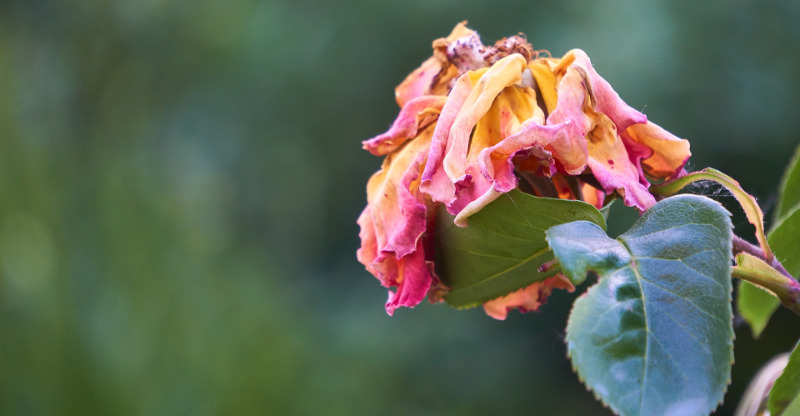
How to Prune Roses
Step 1 - Cut off any old leaves
This removes any pests or disease hiding on the leaves.
Step 2 - Prune to open up the center of the plant.
Cut down branches that cross. This opens up the center of the plant for better air circulation.

Step 3 - Remove dead and diseased wood.
Cut the dead brown canes down until you see green healthy canes.
Check out this rose bush and you can see the green canes that are new and fresh, and the old brown canes that need to be cut out.

Here are two examples of new and old wood on a different rose variety.

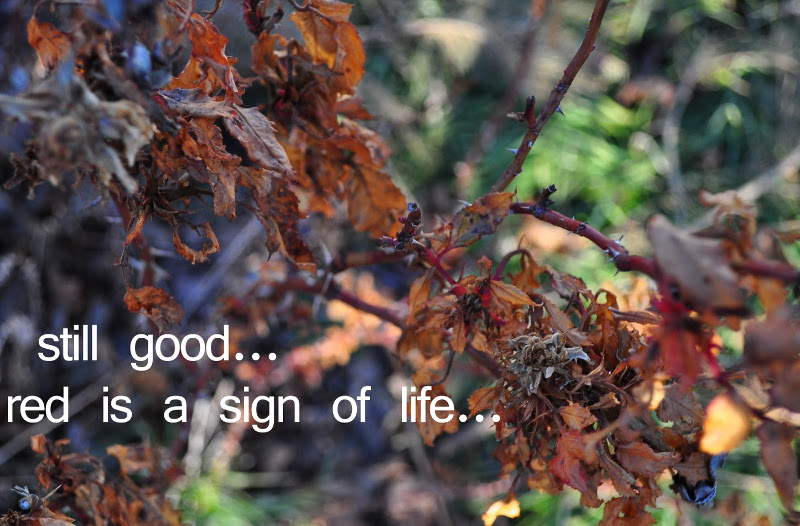
Step 4 - Remove any thin twiggy growth.
Prune any canes thinner than a pencil.
Step 5 - Remove sucker growth.
Suckers are useless canes that grow from the base of the main canes. Trim these to the ground.
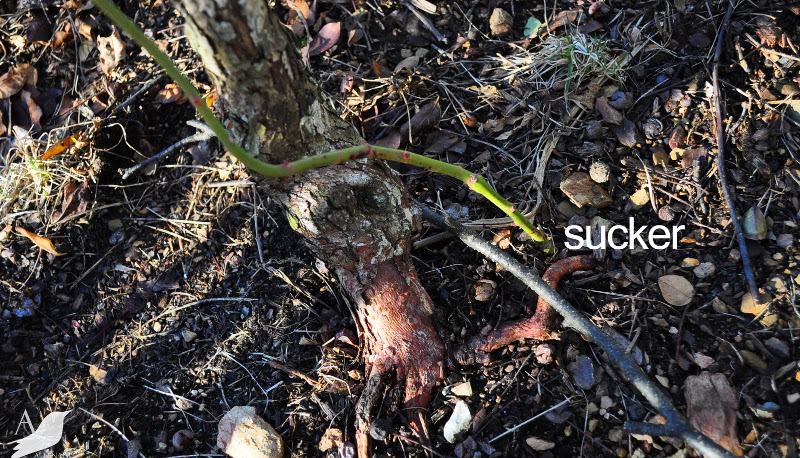
Step 6 - Once you get all of your dead, damaged, crossing and non-productive branches, you can clear out a bit more, up to 1/3 of the total plant, to open up the inside. Here is the finished rosebush with about a 1/3 of the canes gone.
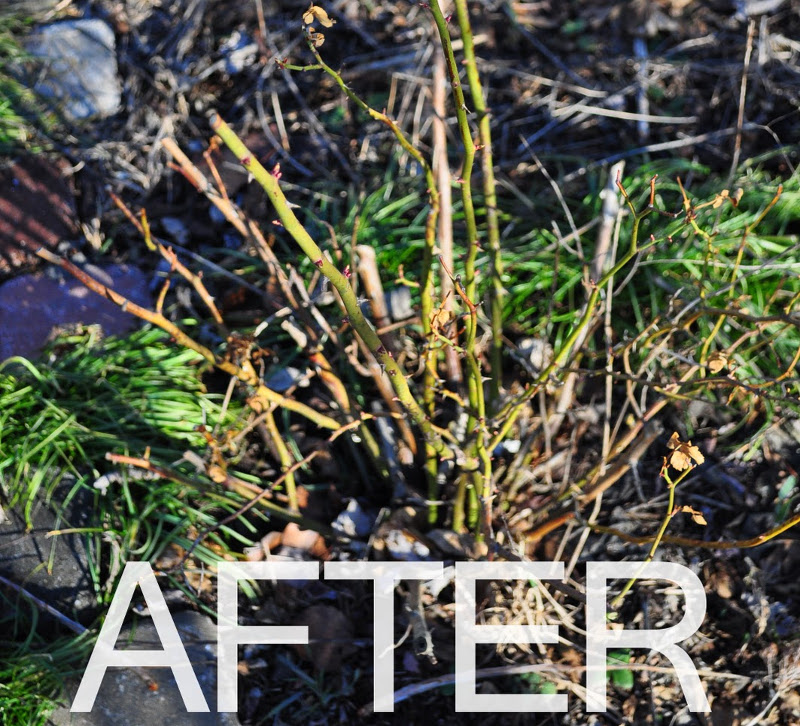
Step 7 - Seal Fresh cuts
Protect freshly cut canes from rot and rose borers by sealing with white glue.
Step 8 - Clean up area.
Dispose all cut branches and leaves to prevent lingering pests or disease.
Pruning Different Varieties of Roses
Ranging in size from miniature roses to tall climbing roses, each rose variety will need a different type of pruning. It is best to refer to the label on your rose bush for specific pruning guidelines.
In general, the first pruning of your rose shrub will be in the spring when the plant comes out of dormancy. Miniature roses that are not actively blooming can be trimmed back by 1/3rd or 1/4th each year. They may also require some trimming for shaping. Climbers, creepers, and ramblers can be trimmed to remove damaged or dead plant material, to maintain shape, or to deadhead.
Why Do You Prune Roses
If you do not attend to your garden roses, they will grow rampant, take over your garden, and be more prone to disease. Routine pruning makes for a healthy plant. Remove diseased or damaged canes throughout the growing season. Canes growing from the center of the shrub should be removed to promote better air circulation. Pruning should also be done to enhance the appearance of your rose.
Cutting off tall leggy canes and deadheading old flowers encourages repeated blooming. Routine pruning helps to control the overall size and shape of the shrub.
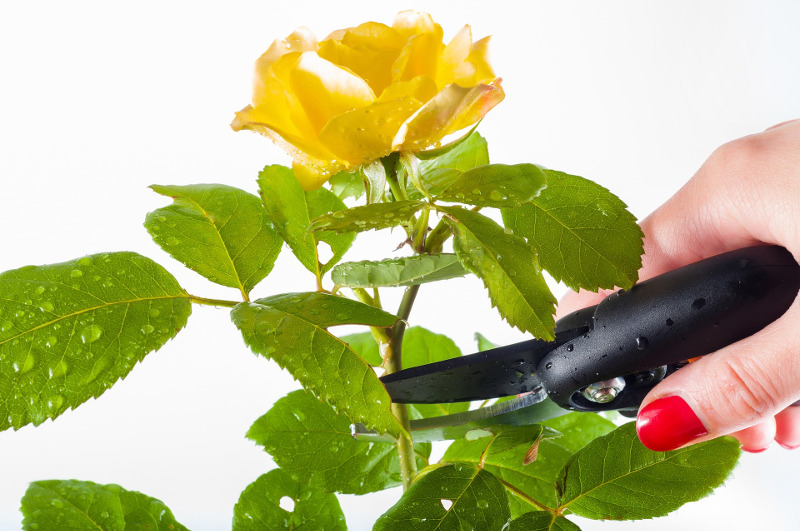
Rose Pruning Tips
- Prune dead or diseased wood back to healthy green tissue.
- Prune canes at the center of the shrub to promote good air circulation.
- Prune useless suckers.
- Remove old woody dead canes.
- Seal freshly cut canes with glue.
- Deadhead to promote repeated flowering.
- Clean up the area after pruning and discard debris.
 |
Author Chris Link - Published 05-28-2021 |
